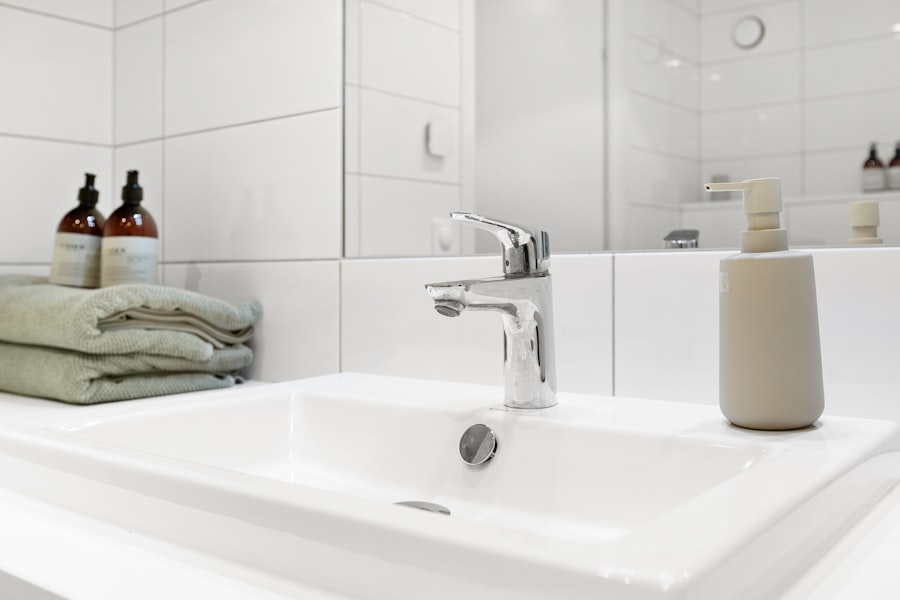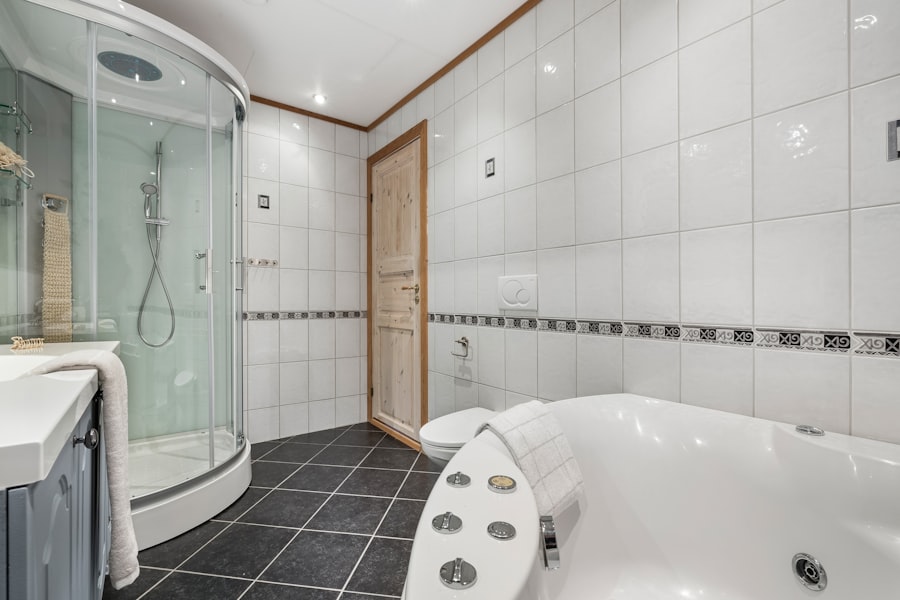The average cost of bathtub replacement can vary significantly based on several factors, including the type of bathtub, the complexity of the installation, and the region in which you live. On average, homeowners can expect to pay between $3,000 and $5,000 for a complete bathtub replacement. This figure typically includes the cost of the bathtub itself, labor, and any necessary materials.
However, it is essential to note that this is a general estimate; costs can soar to $10,000 or more for high-end models or extensive renovations that require additional plumbing or structural work. In addition to the base price of the bathtub, homeowners should also consider the costs associated with removing the old tub and preparing the space for the new installation. This process can involve additional labor and disposal fees, which can add anywhere from $500 to $1,500 to the overall cost.
Furthermore, if your bathroom requires modifications to accommodate a new tub—such as changes to plumbing or electrical systems—these expenses can quickly escalate. Therefore, it is crucial to have a clear understanding of your budget and the potential costs involved before embarking on a bathtub replacement project.
Key Takeaways
- Bathtub replacement costs vary widely based on tub type, materials, and installation complexity.
- Key factors influencing costs include tub size, plumbing modifications, and labor fees.
- Additional expenses may arise from demolition, disposal, and bathroom repairs.
- DIY installation can save money but may risk improper fitting; professional installation ensures quality but at higher cost.
- Careful budgeting, researching contractors, and exploring cost-saving tips can help manage overall replacement expenses.
Factors that Influence Bathtub Replacement Costs
Several factors can influence the overall cost of replacing a bathtub, and understanding these elements can help homeowners make informed decisions. One of the most significant factors is the type of bathtub being installed. Bathtubs come in various materials, including acrylic, fiberglass, cast iron, and porcelain-enameled steel.
Each material has its own price point and durability characteristics. For instance, acrylic tubs are generally more affordable and lightweight, making them easier to install, while cast iron tubs are heavier and more expensive but offer superior durability and heat retention. Another critical factor is the complexity of the installation process.
If your existing plumbing is outdated or if you are switching from a standard tub to a more complex design—such as a soaking tub or a jetted model—additional labor may be required. This can include rerouting plumbing lines or reinforcing the floor to support a heavier tub. Additionally, if your bathroom layout requires significant alterations to accommodate the new tub, such as moving walls or fixtures, these changes will further increase labor costs.
Homeowners should also consider regional labor rates, as costs can vary widely depending on local market conditions.
Understanding the Different Types of Bathtubs and Their Costs

When considering a bathtub replacement, it is essential to understand the various types of bathtubs available on the market and their associated costs. Standard alcove bathtubs are among the most common options and typically range from $300 to $1,500. These tubs are designed to fit into a three-wall alcove and are often made from acrylic or fiberglass.
They are an excellent choice for homeowners looking for a budget-friendly option that still offers functionality. Freestanding bathtubs have gained popularity in recent years due to their aesthetic appeal and versatility. These tubs can be placed anywhere in the bathroom and come in various styles, including modern and vintage designs.
The cost of freestanding tubs can range from $1,000 to over $5,000, depending on the material and design features. For instance, a simple acrylic freestanding tub may cost around $1,200, while a luxurious clawfoot tub made from cast iron could exceed $4,000. Another option is the whirlpool or jetted bathtub, which provides a spa-like experience at home.
These tubs typically range from $1,500 to $6,000 or more, depending on their size and features. While they offer relaxation benefits, homeowners should also consider the additional maintenance required for jetted tubs, such as cleaning the jets and ensuring proper water circulation.
Additional Costs to Consider When Replacing a Bathtub
| Cost Item | Description | Estimated Range |
|---|---|---|
| Demolition and Removal | Cost to remove the old bathtub and dispose of debris | 100 – 300 |
| Plumbing Modifications | Adjustments to plumbing to fit new bathtub | 150 – 500 |
| Flooring Repairs | Fixing or replacing damaged subfloor or tiles | 200 – 800 |
| Wall Repairs and Painting | Repairing walls and repainting after installation | 100 – 400 |
| Permit Fees | Local government permits required for plumbing work | 50 – 200 |
| Disposal Fees | Cost to dispose of old bathtub and materials | 50 – 150 |
| Labor Costs | Professional installation labor charges | 300 – 1000 |
| Additional Fixtures | New faucets, drains, or showerheads | 100 – 400 |
In addition to the primary costs associated with purchasing and installing a new bathtub, there are several additional expenses that homeowners should factor into their budget. One significant cost is related to plumbing modifications. If your new bathtub requires different plumbing configurations than your old one—such as moving drain lines or adjusting water supply lines—these changes can add several hundred dollars to your overall expenses.
Another potential cost is related to bathroom finishes and fixtures. When replacing a bathtub, many homeowners take the opportunity to update surrounding elements such as tiles, vanities, faucets, and showerheads. Depending on the quality of materials chosen, these upgrades can significantly impact your budget.
For example, high-end tiles can cost upwards of $15 per square foot, while more affordable options may be available for around $2 per square foot. Additionally, homeowners should consider potential permits required for plumbing work or structural changes. Depending on local regulations, obtaining permits can add another layer of expense and time to your project.
It is advisable to check with local building authorities before starting any renovation work to ensure compliance with regulations.
DIY vs Professional Installation: Cost Comparison
When it comes to bathtub replacement, homeowners often face the decision of whether to tackle the project themselves or hire a professional contractor. The cost implications of each option can vary widely. A DIY installation may seem appealing due to potential savings on labor costs; however, it requires a certain level of skill and experience in plumbing and construction.
If you are confident in your abilities and have experience with home improvement projects, you might save anywhere from $500 to $2,000 by opting for DIY installation. However, it is crucial to weigh these potential savings against the risks involved in DIY projects. Mistakes made during installation can lead to costly repairs down the line or even damage to your home.
For instance, improper sealing around the tub could result in water leaks that damage flooring or walls. Hiring a professional contractor typically costs between $1,000 and $3,000 for labor alone but ensures that the job is done correctly and efficiently. Moreover, professional installers often have access to better pricing on materials due to their industry connections and experience with sourcing products.
They can also provide valuable insights into design choices and help navigate any unexpected challenges that may arise during installation. Ultimately, while DIY may offer short-term savings, investing in professional installation can provide peace of mind and long-term value.
How to Budget and Plan for Bathtub Replacement

Budgeting for a bathtub replacement requires careful planning and consideration of all associated costs. Start by determining your overall budget for the project; this should include not only the cost of the bathtub itself but also installation fees, materials for any necessary renovations, and additional expenses such as permits or inspections. It is advisable to set aside an extra 10-20% of your budget as a contingency fund for unexpected costs that may arise during the project.
Next, research different types of bathtubs that fit within your budget while meeting your aesthetic preferences and functional needs. Visit showrooms or browse online retailers to compare prices and features. Make sure to take measurements of your existing space to ensure that any new tub will fit properly without requiring extensive modifications.
Once you have selected a bathtub model and established a budget range, consider obtaining quotes from multiple contractors if you plan on hiring professionals for installation. This will give you a clearer picture of labor costs in your area and help you identify any potential savings opportunities. Be sure to ask about warranties on both materials and labor; this can provide added protection for your investment.
Tips for Saving Money on Bathtub Replacement
There are several strategies homeowners can employ to save money on bathtub replacement without sacrificing quality or aesthetics. One effective approach is to shop during off-peak seasons when contractors may offer discounts or promotions due to lower demand for renovation services. Additionally, consider purchasing materials during sales events or clearance periods; many retailers offer significant discounts on bathtubs and related fixtures at certain times of the year.
Another way to save money is by opting for simpler designs or materials that still meet your needs but come at a lower price point. For example, choosing an acrylic tub over a cast iron model can result in substantial savings while still providing durability and ease of maintenance. Additionally, consider reusing existing fixtures where possible; updating faucets or showerheads instead of replacing them entirely can help keep costs down.
If you are comfortable with some aspects of the installation process but lack experience in plumbing or heavy lifting, consider taking on smaller tasks yourself while hiring professionals for more complex work. For instance, you might handle demolition or tile work while leaving plumbing connections to an experienced contractor.
Finding the Right Contractor for Your Bathtub Replacement
Selecting the right contractor for your bathtub replacement project is crucial for ensuring a successful outcome. Start by seeking recommendations from friends or family who have recently completed similar projects; personal referrals can provide valuable insights into a contractor’s reliability and quality of work. Additionally, online reviews and ratings on platforms like Angie’s List or Yelp can help you gauge customer satisfaction levels.
Once you have identified potential contractors, schedule consultations with each one to discuss your project in detail. During these meetings, ask about their experience with bathtub replacements specifically and request examples of previous work they have completed. A reputable contractor should be willing to provide references from past clients who can speak to their professionalism and craftsmanship.
It is also essential to obtain detailed written estimates from multiple contractors before making a decision. These estimates should outline all costs associated with the project—including labor, materials, permits, and any potential contingencies—so you can make an informed comparison between bids. Finally, ensure that any contractor you choose is licensed and insured; this protects you from liability in case of accidents during the project and ensures compliance with local building codes.
By carefully considering these factors when planning your bathtub replacement project, you can navigate the complexities of budgeting and installation while achieving a beautiful new bathroom feature that enhances both functionality and aesthetics in your home.




